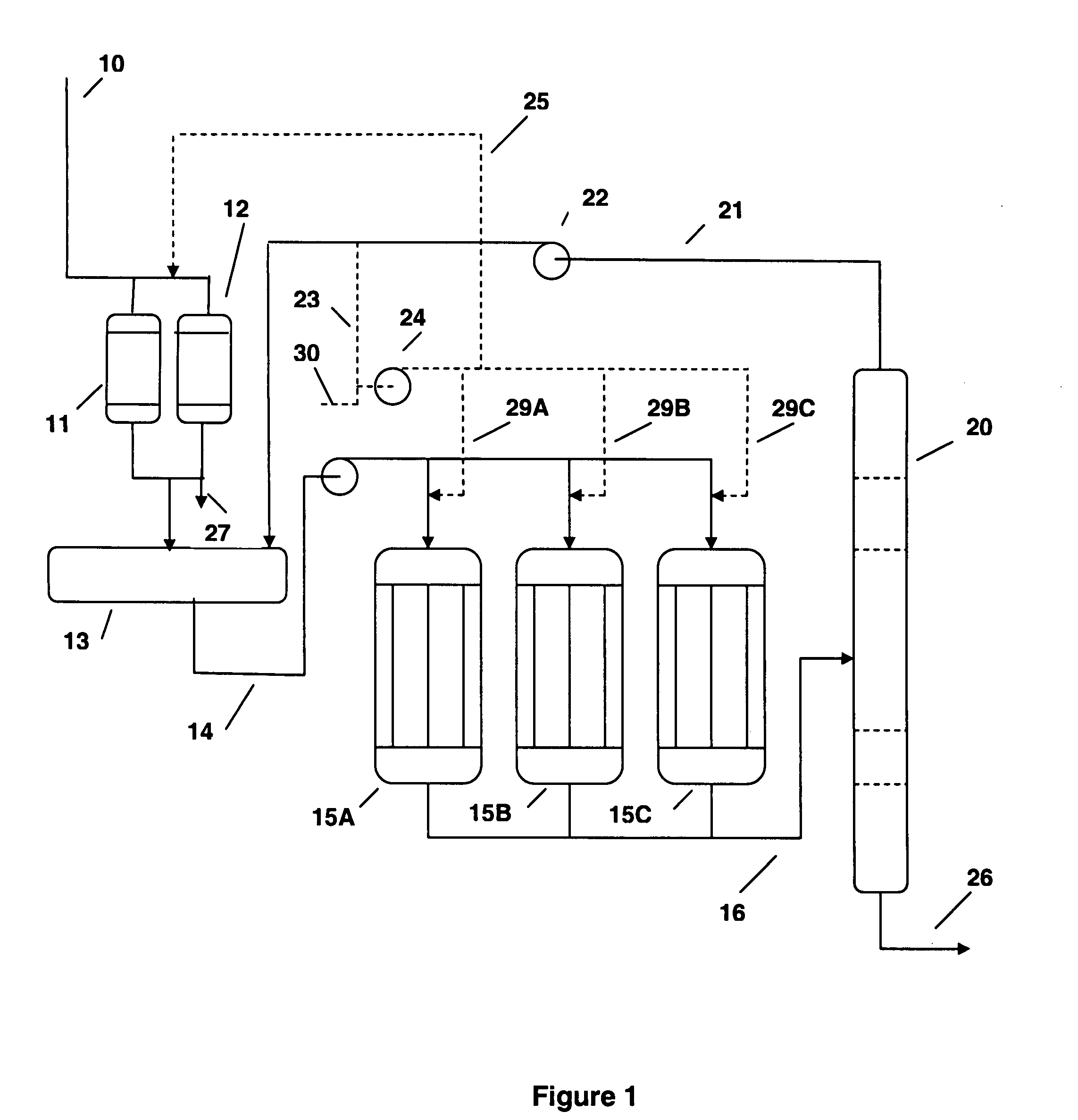Olefin upgrading process with guard bed regeneration
a technology of olefin upgrading and guard bed, which is applied in the direction of hydrocarbon oil treatment products, physical/chemical process catalysts, bulk chemical production, etc., can solve the problems of increasing the pressure drop across the reactor, reducing the activity of the refinery, and not being able to divert petroleum fuels and lubricants to petrochemical uses
- Summary
- Abstract
- Description
- Claims
- Application Information
AI Technical Summary
Benefits of technology
Problems solved by technology
Method used
Image
Examples
example
[0031]The efficacy of the contaminant desorption treatment for the guard bed material was demonstrated using a reactive guard bed contained in a 10 mm diameter microunit containing 2 g of an MCM-49 catalyst packed with sand to make up the reactor volume. A feed mixture of benzene and propylene (2.8:1 molar ration benzene: propylene) was passed through the tube held at a temperature of 120° C. and a pressure of 2400 kPag (350 psig), using a space velocity of 1.25 WHSV of propylene. From day 1 until day 20, the feed included 200 ppm water and the propylene conversion was at or close to 100% during this time. At day 20, 25 ppmw sulfur was added to the feed as iso-propyl sulfide and in the course of five days, the conversion dropped to about 23-47 percent. On reverting to a clean feed (200 ppmw water), the propylene conversion reverted over about five days to essentially 100 percent. After about 32 days on stream, the feed was changed to a dry feed (less than 10 ppmw water) containing 2...
PUM
| Property | Measurement | Unit |
|---|---|---|
| Temperature | aaaaa | aaaaa |
| Temperature | aaaaa | aaaaa |
| Temperature | aaaaa | aaaaa |
Abstract
Description
Claims
Application Information
 Login to View More
Login to View More - R&D
- Intellectual Property
- Life Sciences
- Materials
- Tech Scout
- Unparalleled Data Quality
- Higher Quality Content
- 60% Fewer Hallucinations
Browse by: Latest US Patents, China's latest patents, Technical Efficacy Thesaurus, Application Domain, Technology Topic, Popular Technical Reports.
© 2025 PatSnap. All rights reserved.Legal|Privacy policy|Modern Slavery Act Transparency Statement|Sitemap|About US| Contact US: help@patsnap.com


